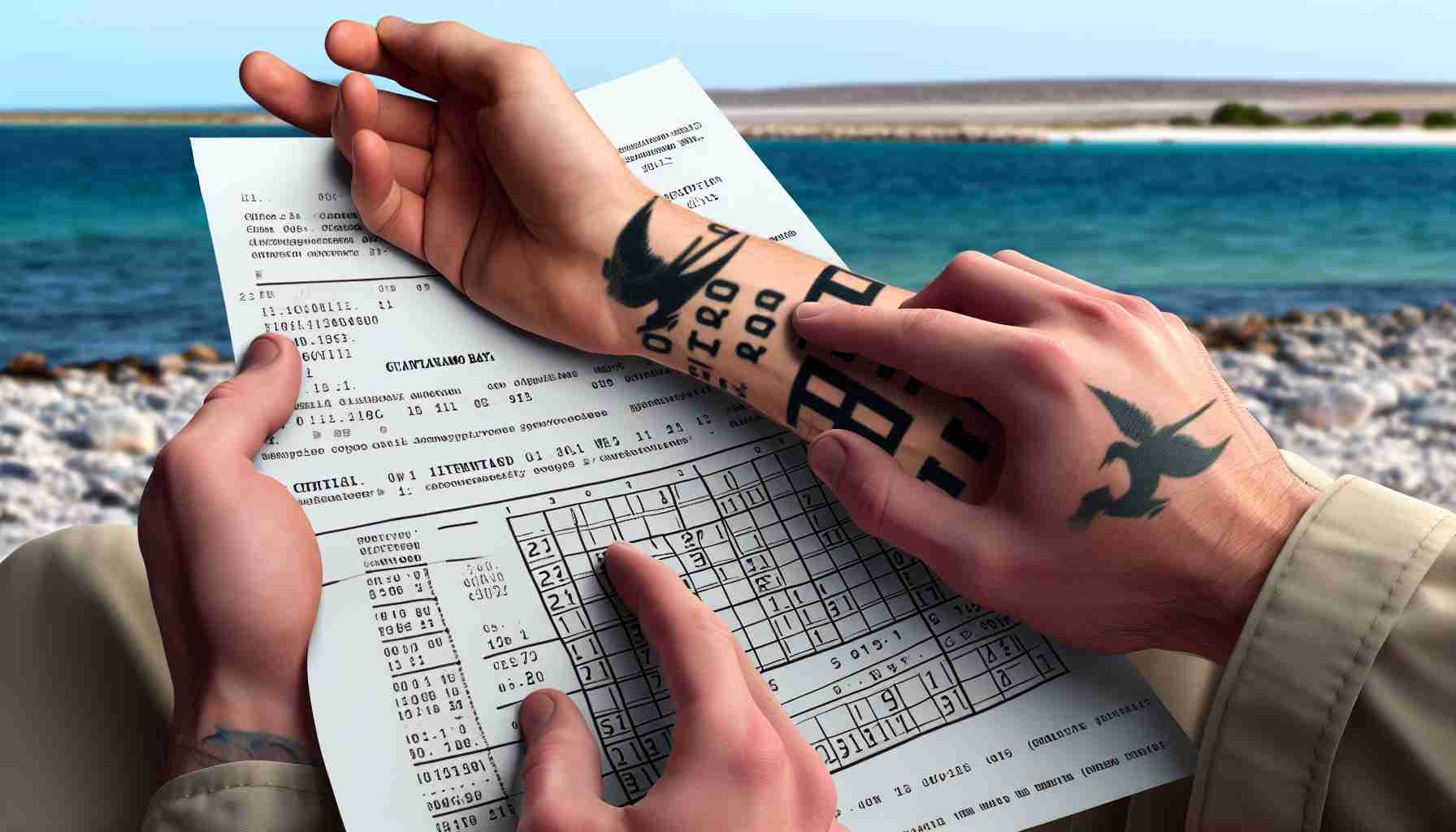- Migrant Luis Alberto Castillo Rivera’s tattoos, including Air Jordans and owls, are misinterpreted as gang signs, leading to unjust detainment in Guantanamo Bay.
- Castillo Rivera’s legal entry into the U.S. is overshadowed by bureaucratic decisions, reflecting broader anxiety among migrants about misjudgments based on cultural markers.
- This case highlights systemic issues with immigration authorities classifying individuals from ‘low-risk’ to ‘high-risk’ based on superficial assessments.
- The ordeal underscores the need for a more humane approach to asylum seekers, emphasizing understanding over rigid policies.
- Tattoos, often symbols of identity, should not lead to assumptions that result in life-altering consequences for migrants.
Wind sweeps across the distant landscape of Guantanamo Bay, where misunderstood ink leaves a migrant in a surreal limbo. Customs and Border Protection officers might now scrutinize tattoos of Air Jordans and owls as indicators of gang associations—unfounded assumptions that landed Luis Alberto Castillo Rivera in a holding facility more reminiscent of Cold War detentions than a modern-day approach to asylum seekers.
Amidst whispers of injustice, Castillo Rivera’s family remains bewildered by the ordeal. Although the 23-year-old Venezuelan entered the U.S. legally, bureaucratic decisions have entangled him in a web of harsh judgments and uncertain futures. His story signifies a broader trend of anxiety within migrant communities, illustrating how the complex tapestry of culture and identity can be easily misinterpreted, particularly with tattoos common among youth mistaken for gang affiliations.
Lost behind these obscuring shadows, Castillo Rivera’s tattoos have inadvertently dictated his fate. His journey, intended to be a refuge from years of turmoil, took an unexpected twist when his body art became a proxy crime. Any hope that entering through established channels might shield him vanished like vapor as the perfunctory signing of documents led not to freedom, but to detainment.
As whispers escape Guantanamo Bay’s walls, concerns grow regarding the broader use of ‘low-risk’ to ‘high-risk’ classifications by federal immigration authorities. Individuals like Castillo Rivera find their lives upturned, awaiting clarity in the dusty barracks christened the Migrant Operations Center—a place they hoped to never see.
The ink etched on skin should tell stories of identity and personal history, not weave tales of mistaken identities that upend lives. Amid policies and procedures, humanity must remain paramount. Let’s not allow misinterpretation to forge chains instead of understanding.
The Shocking Truth About Tattoos and Immigration: What You Need to Know
How Tattoos Impact Immigration Decisions
The case of Luis Alberto Castillo Rivera highlights an unfortunate yet emerging issue in immigration procedures—tattoos being used as evidence for gang affiliation, affecting asylum seekers and migrants. This phenomenon raises several pressing questions and concerns that deserve a deeper exploration.
How-To Steps & Life Hacks: Protecting Your Rights
– Understand Your Rights: Migrants need to be informed about their rights during immigration processes. Consult legal experts, particularly those specializing in immigration law, to provide guidance.
– Clear Documentation: Ensure all legal documents are in order and carry proof of identity and intent that can counter potential misconceptions about personal identifiers like tattoos.
– Seek Legal Counsel: If detained or questioned about tattoos, immediately contact an immigration lawyer. Organizations like the American Immigration Lawyers Association can offer assistance.
Real-World Use Cases: Tattoo Misinterpretation Consequences
Several migrants have faced detention due to tattoo misinterpretation. Tattoos of cultural or personal significance can be seen as indicators of gang association, leading to detainment and legal complications. This real-world application demonstrates the necessity of awareness and clearly distinguishing between cultural symbols and gang identifiers.
Controversies & Limitations
The subjective nature of assessing tattoos for gang affiliation poses significant issues:
– Cultural Misunderstanding: Tattoos may have cultural significance unrelated to illegal activities.
– Lack of Standardization: There is no universal criterion to determine what classifies a tattoo as a gang symbol, leading to arbitrary detainment.
Market Forecasts & Industry Trends
As this issue gains more media exposure, there is an increased demand for:
– Legal Services: Growth in the legal sector addressing immigration and tattoos.
– Cultural Training for Officers: Initiatives to properly train officers in distinguishing between cultural tattoos and gang-related ink are crucial.
Security & Sustainability: Ensuring Fair Treatment
Immigration policies should incorporate fairness while maintaining security. Structured training programs for border and customs officials can mitigate wrongful detentions and ensure cultural sensitivity.
Insights & Predictions
Given current trends, there may be a push towards policy revisions within federal immigration authorities. Future guidelines could include:
– Enhanced Officer Training: More comprehensive training in cultural sensitivity could likely be emphasized.
– Policy Advocacy: Activists and stakeholders advocating for clearer and more compassionate immigration practices.
Pros & Cons Overview
– Pros:
– Raised awareness about potential biases in immigration procedures.
– Possible improvements in immigration policy and officer training.
– Cons:
– Prolonged and undue detention for innocent migrants.
– Misconception of personal identity leading to legal trouble.
Recommendations
– Legal Preparedness: Always have access to a trusted legal contact if facing detainment.
– Mindful Display: Be conscious of how tattoos might be perceived in different environments, particularly in formal settings like border crossings.
By becoming informed and prepared, potential migrants can better navigate the complexities of immigration law and cultural misunderstandings.
For more information and legal help, visit the American Civil Liberties Union or the American Immigration Lawyers Association.
